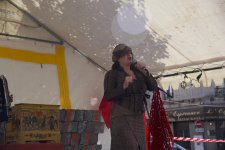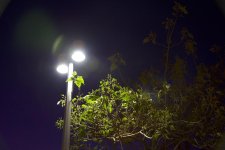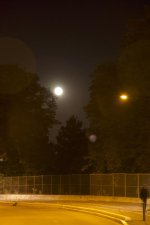Hi,
Thank you so much for your response. I will remove the filter first since it seems a good try. :encouragement:
Re:I was shooting in Raw file. If I shoot in RAW, should I active D-Lighting? What is D-Lighting function doing ? I will research on the D-Lighting. Thank you. :encouragement:
When I shot jpeg only, I enabled Active D-Lighting. It allows more detail to show up in the shadow areas of the jpegs, and that helps alleviate having to raise shadows during post processing. When you raise (or increase) shadows during post processing, you wind up adding noise. Active D-Lighting is a good feature in
some situations. Unfortunately shooting into the light isn't one of them. But quite a while ago after I switched to shooting RAW, one of our forum members found an article showing how Active D-Lighting even influenced shadows in the RAW files. And I believe it was during that discussion when someone mentioned how Active D-Lighting
adversely affects moon shots in the same way as your moon photo. If I am remembering correctly, it was this same type of issue. So it's something you don't want enabled for moon shots. Active D-Lighting has its purpose; however, this isn't one of the situations where it would be helpful.
I read your comment to another forum member about using an inexpensive UV filter. @
Horoscope Fish posted this informative article about UV filters.
https://www.lensrentals.com/blog/20...anking-of-the-major-uv-filters-on-the-market/
Based on the results of his testing, this inexpensive filter performed quite high.
https://www.bhphotovideo.com/c/sear...&N=0&InitialSearch=yes&sts=ma&Top+Nav-Search=
And if you are using the Nikon 24-120mm f/4 VR, this would be the specific 77mm filter to fit that lens:
https://www.bhphotovideo.com/c/product/652134-REG/Hoya_A77UVC_77mm_Ultraviolet_UV_0_Haze.html
I use these on quite a few of my lenses.
That said, I just bought this lens Monday. One thing I noticed is when I aimed the lens towards a light source, I could see some glare/haze bouncing around inside the lens. That happens due to the construction of the lens. Some lenses are better at handling glare/haze than others. It is something that doesn't happen much with my other lenses, but this particular lens might not be the best one to use in these specific situations. You should be able to see a little of the glare/haze when looking through the viewfinder
if it will be present in your images. The resulting images will probably show even more glare/haze than what you can see. But either try shooting without a UV filter when aimed towards a light source, or read the article and see if there is a UV filter listed that you want to get.



